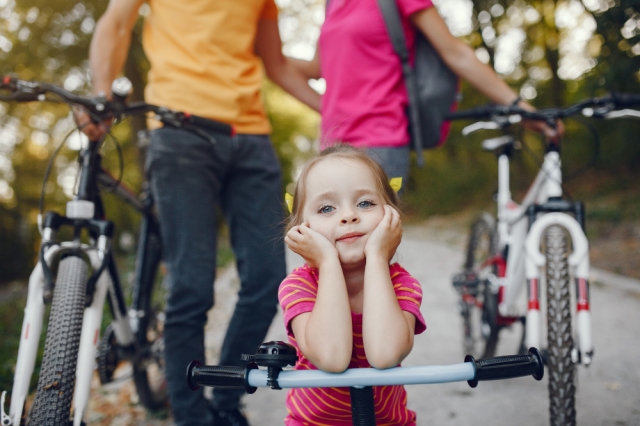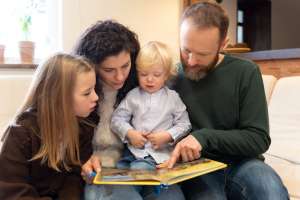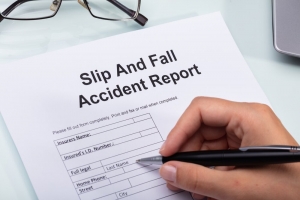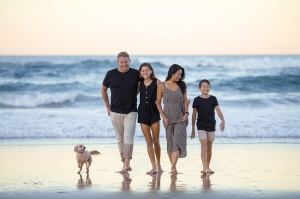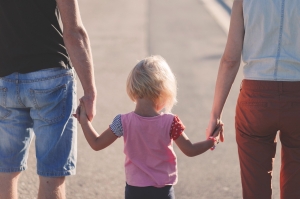Biking is more than just a fun activity; it's a gateway to a lifetime of health and enjoyment for children. Learning to ride a bike is a significant milestone in a child's life, offering numerous physical and psychological benefits. From improving fitness and coordination to boosting confidence and providing a sense of freedom, the advantages of biking can profoundly impact a child's development.
However, the key to unlocking these benefits lies in choosing the right bike. Selecting a safe, appropriately sized, and suitable bike for a child’s age and riding skills is critical. A well-fitted bike makes learning easier and safer, encouraging children to ride more often and enjoy themselves without discomfort or fear of injury. This introduction will guide you through the various aspects to consider when picking the perfect bike for your child, ensuring it aligns with their developmental needs and riding ambitions.
Understanding the Different Types of Kids' Bikes
Choosing the right type of bike for a child is essential to fostering their love for cycling and ensuring their safety. Here’s a breakdown of the various types of kids’ bikes available, each designed to cater to different stages of a child's development and interests:
Balance Bikes
- Description: Balance bikes are specifically designed for toddlers and young children who are just starting out. These bikes do not have pedals, which allows children to focus solely on learning to balance and steer.
- Benefits: By pushing the ground with their feet, kids learn to maintain their balance naturally, which is a crucial skill before moving on to more complex biking activities. These bikes are lightweight, easy to handle, and help build confidence in young riders.
Pedal Bikes
- Description: Once a child has mastered the balance bike, the next step is usually a pedal bike. These standard bicycles come with pedals, brakes, and sometimes even a simple gear system.
- Benefits: Pedal bikes enhance coordination as children learn to synchronize their pedaling with steering. They are suitable for various ages, depending on the size and features of the bike.
BMX Bikes
- Description: BMX bikes are designed for children and teenagers interested in doing tricks, racing, or riding on BMX tracks. These bikes typically have a sturdy, compact frame, 20-inch wheels, and a single gear.
- Benefits: BMX biking is excellent for building physical strength and agility. It also provides a social outlet, as many kids enjoy BMX as a group activity that involves performing tricks and stunts.
Mountain Bikes
- Description: For older children who want to explore varied terrains, mountain bikes are ideal. These are similar to adult mountain bikes but scaled down to fit younger riders.
- Benefits: Mountain bikes are equipped with features that handle rough terrain, such as suspension forks and multiple gears. They are great for building endurance and confidence, and they allow young riders to accompany adults on adventure rides.
Each type of bike offers unique advantages and is suited for different stages of a child's cycling journey. By understanding the options and assessing your child's needs and abilities, you can choose a bike that will provide the most comfort, enjoyment, and growth in their cycling skills.
Key Factors to Consider When Choosing a Kids' Bike
Selecting the right bike for a child involves more than just picking a color or style. There are several crucial factors to consider that will ensure the bike is safe, comfortable, and enjoyable for the child to ride. Here’s what to keep in mind:
Size
- Correct Fit: The most important factor when choosing a kids' bike is the size. The bike should be appropriate for the child's height and inseam, not just their age. Kids should be able to sit on the saddle and have their feet touch the ground to ensure they can handle the bike safely.
- Standover Height: Children should be able to straddle the bike with both feet flat on the ground and have a comfortable clearance. This is vital for allowing quick stops and starts, giving them confidence while riding.
Weight
- Ease of Handling: The bike should be lightweight enough for the child to handle easily. A bike that is too heavy can be difficult for a child to maneuver, which can lead to frustration and a decreased desire to ride.
- Material Considerations: Bikes made from materials like aluminum are typically lighter than those made from heavier metals like steel, making them easier for children to ride and control.
Durability and Safety
- Sturdy Construction: Look for bikes that are well-built and can withstand the rough and tumble that comes with kids' biking. Durable materials and solid construction help ensure the bike lasts and is safe to use.
- Safety Features: Essential safety features include non-slip pedals, easy-to-reach brakes that fit the child’s hand size, and effective reflectors for visibility. Chain guards and handlebar pads are also important for younger children.
- Adjustable Components: Features like adjustable seat heights and handlebar positions can accommodate a child's growth, extending the life of the bike.
Gearing
- Simplicity is Key: For younger children, simple gear systems or single-speed bikes are often best as they keep the riding experience straightforward. Managing gears can be challenging for kids who are still learning basic bike handling skills.
- Progressive Complexity: As children grow older and more competent, bikes with more gears can be introduced to help them navigate different terrains more effectively.
By prioritizing these key factors when selecting a bike, you can choose a model that not only fits well but also grows with your child, supports their learning, and encourages them to love cycling.
Where Will Your Child Be Riding?
Choosing the right kids' bike also heavily depends on the environment in which the bike will be used. Different settings require different types of bikes to ensure the child's safety, comfort, and the bike's longevity. Here's a guide to help you match the bike type with the intended riding location:
Neighborhood Streets
- Bike Type: Lightweight street bikes or cruisers are ideal for neighborhood riding. These bikes are typically designed for comfort and easy handling on paved surfaces.
- Features: Look for bikes with smoother tires and fewer gears, which are perfect for relatively flat and even surfaces found in most residential areas.
Parks and Trails
- Bike Type: If your child will be riding in parks that feature dirt tracks or varied terrains such as grassy areas or gravel paths, consider a mountain bike designed for younger riders.
- Features: These bikes should have appropriate tires for traction on loose surfaces and a suspension system to absorb bumps, ensuring a smoother ride on uneven terrains. Even basic suspension forks can make a significant difference in comfort and control.
Competitive or Specialty Riding
- Bike Type: For children who participate in specific biking activities like BMX racing, dirt jumping, or cross-country racing, specialty bikes are necessary. These bikes are tailored to handle the demands of competitive riding and specialized maneuvers.
- Features: BMX bikes, for example, are built with sturdy frames and specific gearing to facilitate quick maneuvers and stunts. Advanced mountain bikes for older children may include more sophisticated gearing systems and better suspension to handle the rigors of competitive trail riding.
When selecting a bike, consider where your child will spend most of their riding time and choose a bike that is best suited for those conditions. This consideration ensures the bike will perform well, last longer, and provide the most enjoyment and utility for your child. By aligning the bike type with the riding environment, you help guarantee a safer and more satisfying biking experience for your child.
Ensuring Proper Fit and Comfort
The fit and comfort of a child's bike are critical to ensuring they enjoy riding and can do so safely. A bike that's too large or too small can be difficult to control and uncomfortable, which may discourage your child from biking. Here’s how to make sure you get the right fit:
Adjustability
- Growth Consideration: Children grow quickly, and buying a new bike every year isn't practical for most families. Look for bikes with adjustable seat posts and handlebars that can grow with your child. This not only provides better value for money but also ensures the bike remains comfortable and safe as your child grows.
- Flexibility in Use: Adjustable features allow the bike to be modified for proper posture and ergonomics. Ensuring the handlebars and seat can be adjusted to the correct height helps maintain a comfortable riding position and effective pedaling.
Test Rides
- Comfort and Suitability: It’s essential for children to test ride bikes before making a purchase. This allows them to feel how the bike handles and gives them an opportunity to check if the size is right. During a test ride, observe how easily your child can mount and dismount, and whether they can comfortably reach the ground and the handlebars.
- Ease of Use: Check that your child can operate the brakes effectively and change gears if the bike has them. The controls should be within easy reach and not require too much force to use, ensuring the child can stop the bike quickly and safely when necessary.
- Right Size Confirmation: A test ride helps confirm that the bike is the correct size. Your child should be able to handle the bike confidently and not feel stretched out or cramped. The knees should not come up too high when pedaling, and the arms should be at a comfortable angle.
Professional Fitting
- Expert Advice: If possible, seek assistance from a professional at a bike shop. They can offer valuable advice and adjustments to ensure the bike fits well. They can also help with initial adjustments and provide tips on what to look for as your child grows.
Ensuring the bike is the right fit and offers comfort is paramount in helping your child develop a long-term interest in cycling. A well-fitted bike not only promotes better riding skills but also enhances safety, making the cycling experience more enjoyable and rewarding for your child.
Conclusion
Cycling offers a myriad of benefits for children, ranging from enhancing physical fitness to boosting psychological well-being. It is an excellent way for kids to increase their activity levels, which helps in developing stronger cardiovascular systems, better coordination, and overall physical health. Beyond the physical, cycling also instills a sense of independence and confidence in children. It teaches them early on about responsibility and the rewards of mastering new skills.
Moreover, biking is a fun way to experience the great outdoors. It encourages children to connect with their environment, appreciate nature, and discover the simple joys of being active outside. Whether riding through neighborhood streets, exploring local parks, or tackling gentle trails, each ride offers new learning opportunities and adventures.
For these reasons, it is crucial for parents to invest time and effort in selecting the right bike for their child. A well-chosen bike that fits properly is not just safer and more comfortable, but also enhances the child's ability to control the bike and enjoy their riding experience. Ensuring the bike matches the child's size, abilities, and interests, as well as the riding conditions under which it will be used, is essential.
Parents should consider the various types of kids' bikes available—from balance bikes for toddlers learning coordination, to pedal bikes for older children, and even specialized BMX or mountain bikes for those with specific interests. Taking the time to ensure a proper fit and allowing children to test ride different models will pay off in the long run, fostering a lifelong love of cycling.
Encourage your child to be part of the bike selection process. This involvement can increase their enthusiasm for cycling and ensure they feel comfortable and excited about their new bike. Remember, a child who loves their bike is more likely to ride regularly, reaping all the benefits that cycling has to offer.
